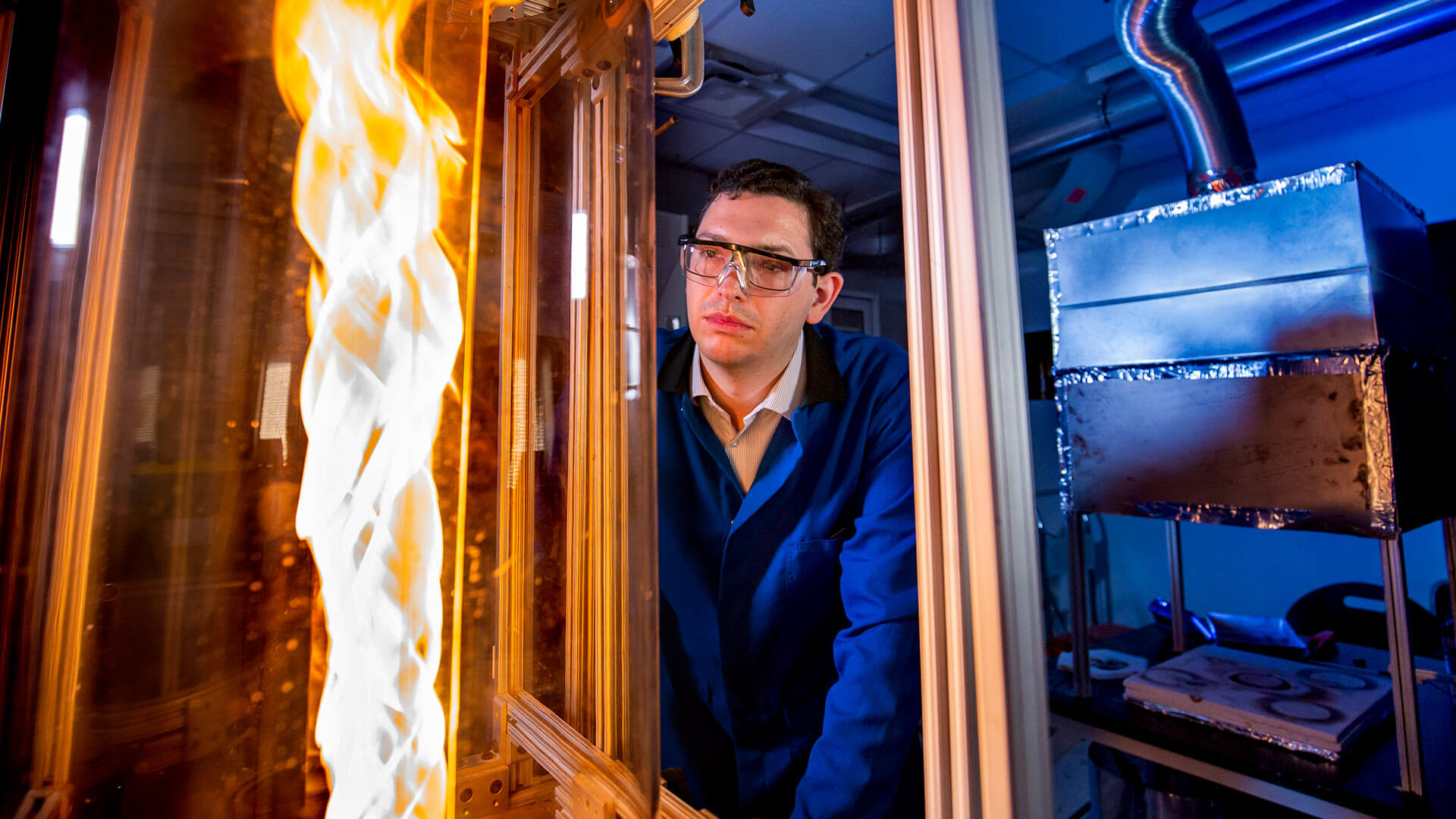- October 29, 2018
- By Melissa Andreychek
Adding up the toll of a massive wildland blaze like California’s 2018 Mendocino Complex Fire seems a straightforward exercise—one death, 280 buildings destroyed and 459,123 acres burned. But there may have been a hidden cost to the men and women who put their lives on the line to finally control it that couldn’t be assessed.
Until now, that is. A $1.5 million award from Federal Emergency Management Agency is financing a unique study to measure the pulmonary and cardiovascular dangers of wildland firefighting. Michael Gollner, an associate professor of fire protection engineering, is co-leading the project with researchers from Northeastern University.
“We put wildland firefighters in harm’s way to protect the natural environment, homes and property, and lives,” Gollner said. “The focus on firefighter safety has largely been about physical injuries such as burns—but as you can imagine, these firefighters are also exposed to a great deal of smoke.”
Wildland fire smoke contains particulate matter, carbon monoxide, volatile organic carbon compounds, and other toxic hazards that put firefighters at risk for cardiovascular disease and chronic obstructive pulmonary diseases like emphysema. However, he said, there have been no data on the long-term effects of exposure, even as the total area affected by fires grows steadily.
While structural firefighters have relatively well-defined standards for respiratory and personal protective gear, wildland firefighters do not. And because wildland firefighters are often deployed for weeks at a time with sometimes repeated deployments over a fire season, they experience an exposure pattern that’s “incredibly difficult to study,” Gollner said.
The FEMA-funded research will look at different smoke exposures that mimic both smaller prescribed fires lit by professionals to head off larger burns, and large wildfires themselves—testing how much benefit is provided by different types of simple respiratory personal protective equipment. That includes the bandanas often worn by wildland firefighters, Gollner said.
“Bandanas are a common tactic because they don’t add an additional burden of weight to firefighters’ already strenuous activity,” he said. “However, it is unknown if, or to what extent, this provides health benefits.”
The research team, led by principal investigators and bioengineers Jessica Oakes and Chiara Bellini of Northeastern University, hopes the three-year project will inform which fire scenarios are the most damaging to pulmonary and cardiovascular health.
Perhaps most importantly, they said, it could lead to recommendations for respiratory personal protective equipment, along with possible changes in tactics to mitigate smoke exposure.
